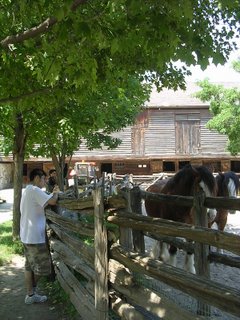This is a progress report and what we should all be thinking right now.
Also, it is a vision into the future of what you should be thinking.
We are all here for a reason. Ultimately, that reason is universal when looked at from a theoretical point of view. But, that theory has many levels and factors. As individuals studying the arts, we all have the (assumed) reasons and purposes to improve our skills in creating art, as well as expand our understanding of art in the process. What is more important in this race? Possessing a higher level of understanding or a higher skill level of creating art? Now, looking at the two different aspects of this theory, can the two co-exist? Or can one exist without the other? For example, reading many books on the theory of art, art history, art techniques, processes and methods can bring about a higher understanding of the concepts. However, does reading about art make you a better artist? A better draftsman? Does knowledge feed skill? No. I believe that practice feeds skill. And in that process, knowledge is fed. Reading only brings about ideas and theories. Through practice comes understanding and realization of those ideas and theories. It's like reading a cook book but not having to cook anything. We are all studying to become an artist, not to merely know or have an idea of what an artist should be. Everything starts with practice and ends with it. In art, our reason is defined and brought to life by practicing it. That's where we work things out and wrestle with obstacles. Non-artist can have as much or more knowledge of art than an artist, but that doesn't make them a good artist. Reading and studying theory, methods and history is very important, but as artists, what is more important is doing it.
Now, with figure drawing, first and foremost is the drawing factor. In the whole realm of life drawing, to most students, drawing the figure well(nicely) is the main purpose. So, naturally, those with that understanding just concentrate on drawing. In drawing, there are many levels involved. Many of these levels do not involve actual drawing, yet seeing is the real trick to learn.
Gesturing (posing the figure), Proportioning ( sizing all the shapes) and Structuring (accurate dimension and perspectives). In doing these things very accurately, the anatomy of the figure in it's space will be accurate. Knowledge of the anatomy will help the process of drawing. Those two things are separate, encouraging a practice in balancing the two to correctly depict reality.
Gesturing comes with faith. Believing that you see with your eyes exactly what is to be drawn. That you are not filtering an image through your mind and analyzing it to a point of complication. Simple is the way to go. The simpler the better when it comes to posing the figure.
Proportioning is done successfully only when the artist is fully aware of the entire size of the subject. It's all about size relationships. Every positive and negative shape has to have a relationship to the whole. Structuring is basically the next step of proportioning because perspective and dimensions are also depicted with lines and shapes. It's just the relationship between those shapes that ultimately create an illusion of space and dimension.
Simple depiction of visual information is all that is required to accurately draw reality. Not much of technical information helps when it comes to drawing and sometimes might even clog up the process. One must know what to do with technical information not just know it. So the way to know is simple. Keep feeding your mind with knowledge and then keep practicing that knowledge until you start to feel comfortable with that knowledge. The one constant thing with my development as a drawer is that the more I practice drawing, theories and methods start to subside and become second nature making drawing more natural and enjoyable. To achieve this state involves a tremendous amount of focused practice, dedication and love for drawing. But you already know that.
Required understanding.
- Clear understanding of simplifying the figure.
- Understanding of anatomy to the extent of full skeleton.
- Ability to capture the essence of a pose with a gesture.
- Ability to draw the human figure proportionately and structurally accurate.
- Understand yourself as a drawer and know what areas need to improve.
Exercises.
- 5 - 10 second gestures.
- 5 - 10 line gesture.
- Blind contour.
- Memory drawing.
- Boxing out the gesture.
- Mass drawing.
- Negative & Positive space.
- Drawing figure as a character.
- Drawing figure in different pose.
- Drawing figure in motion.
- Drawing from point to point.































